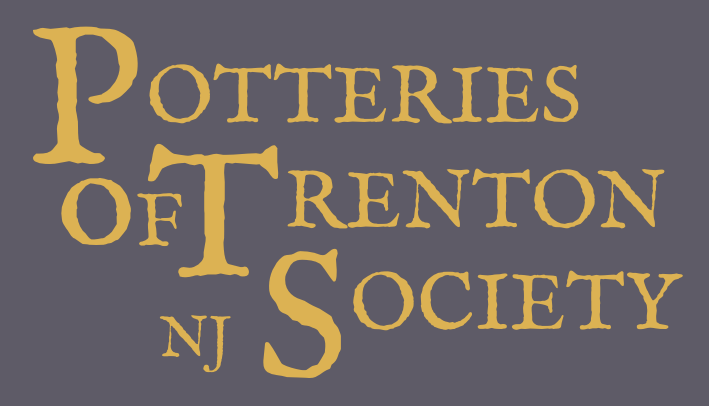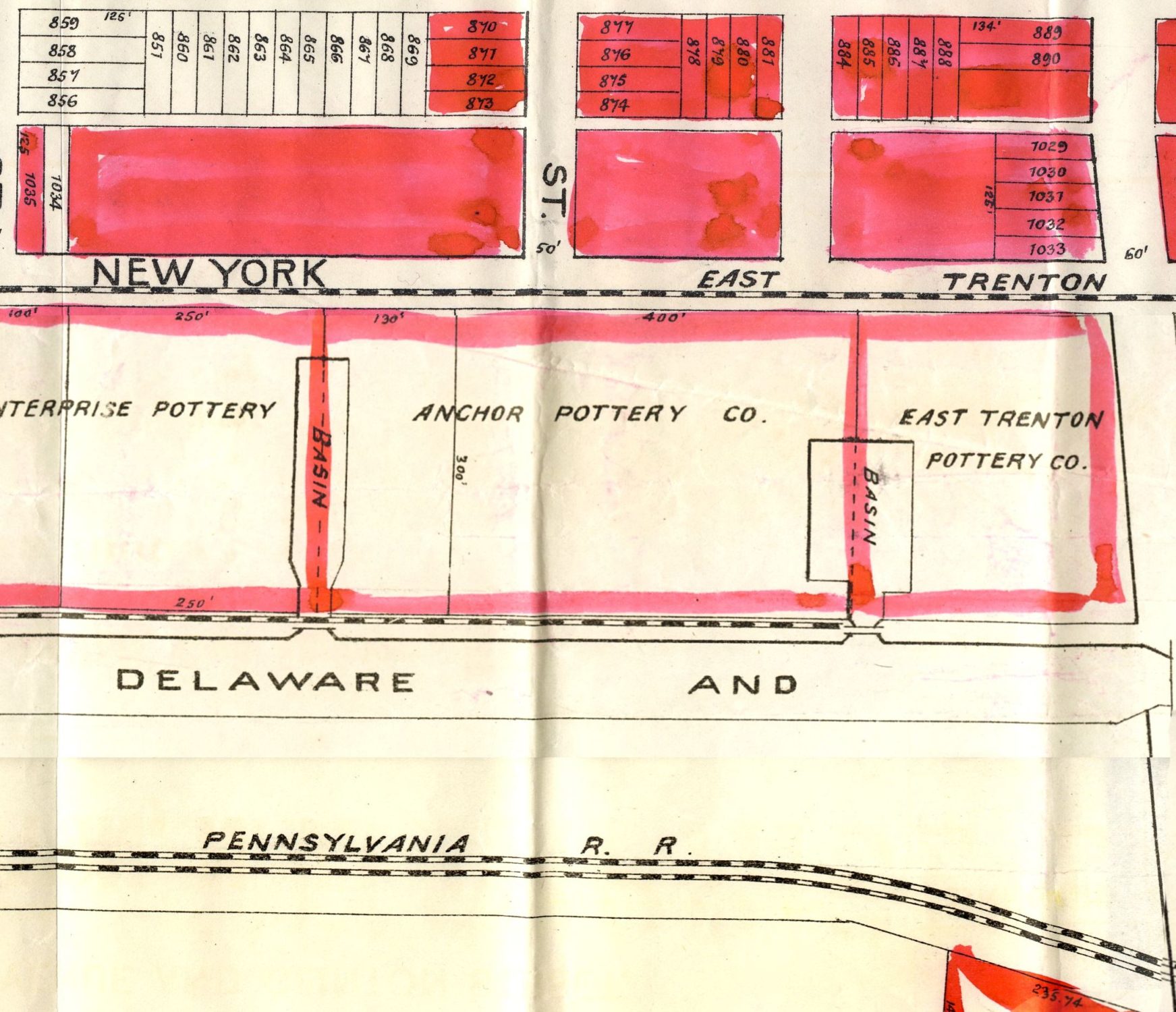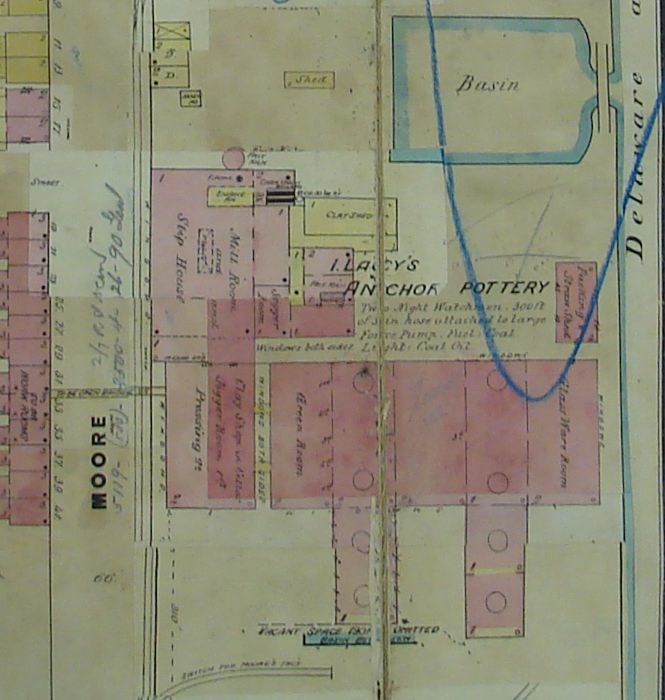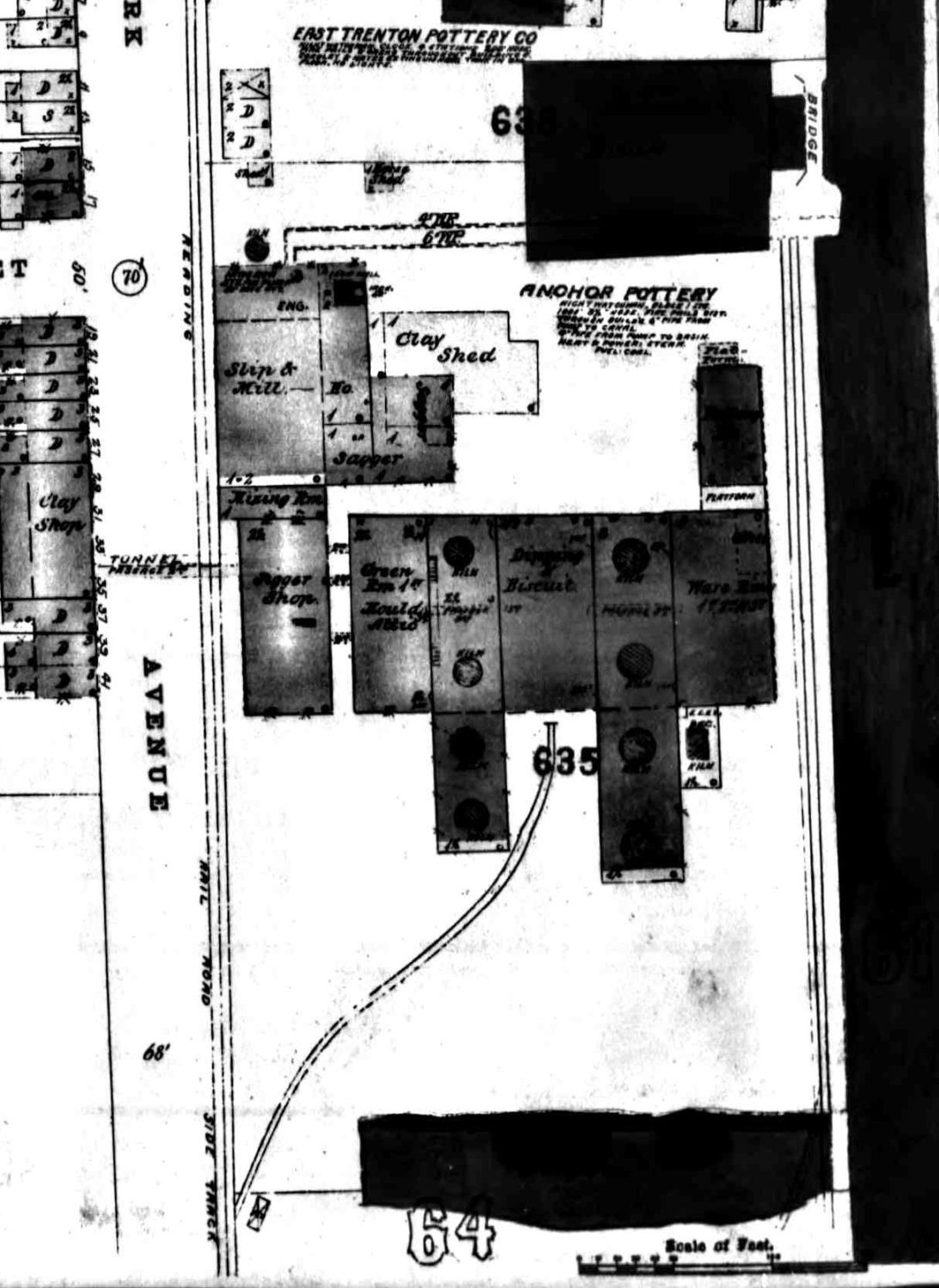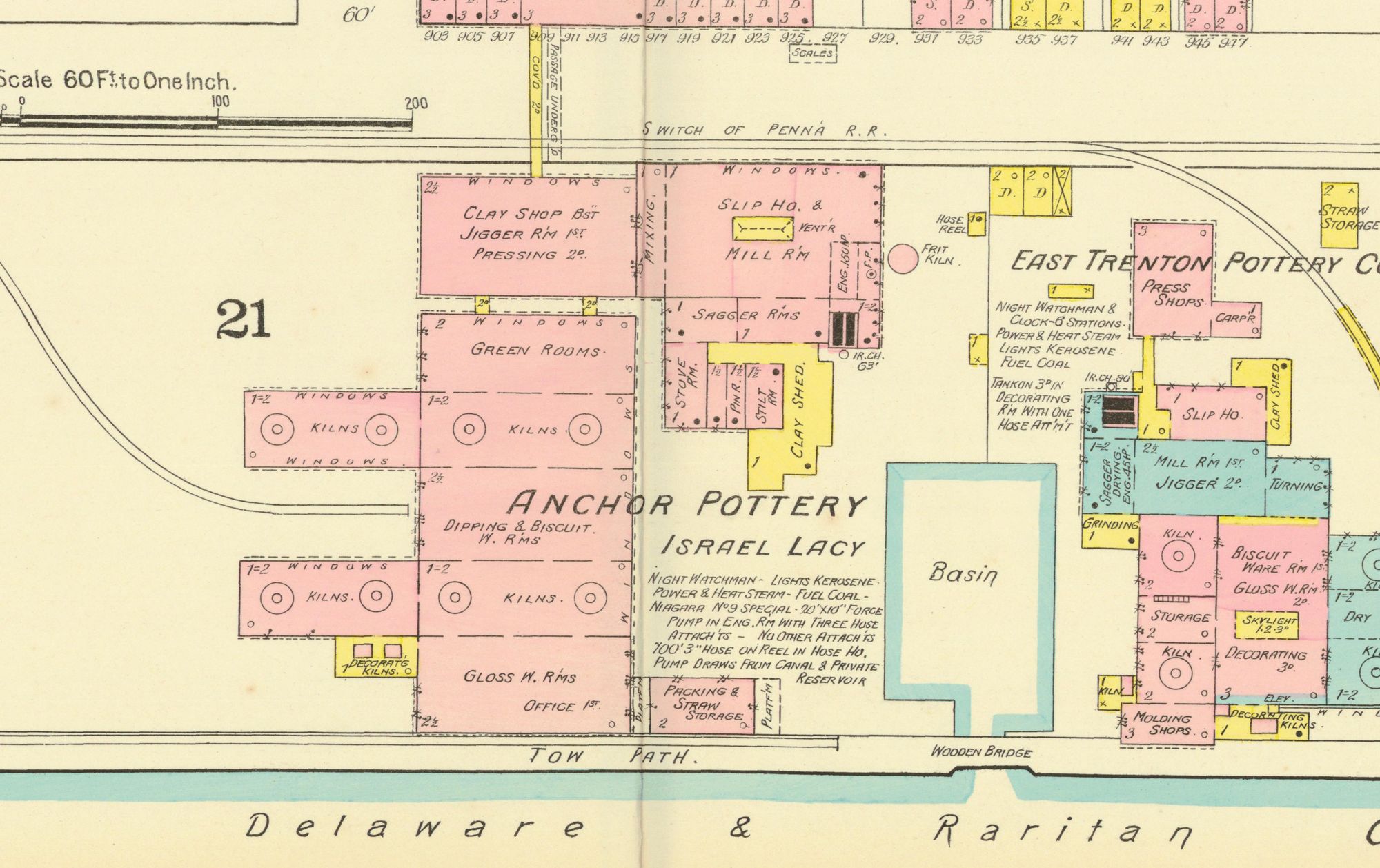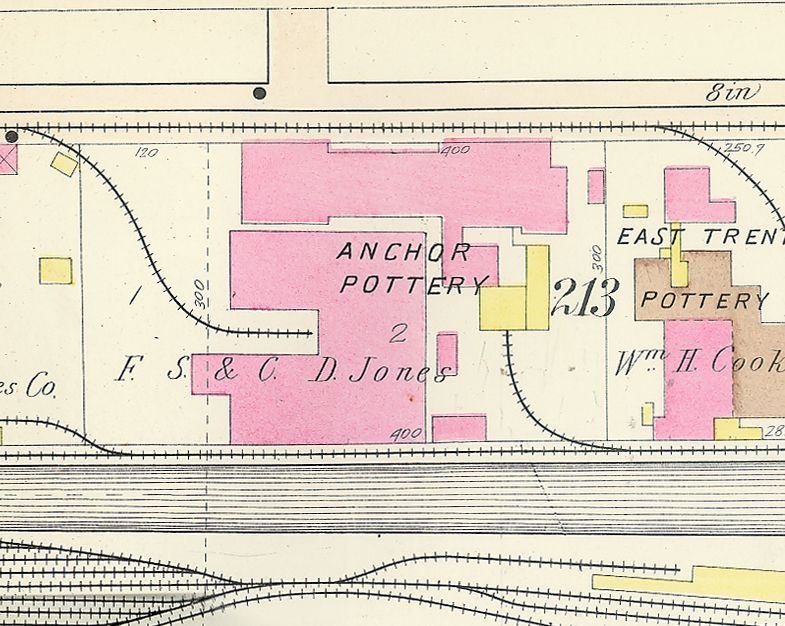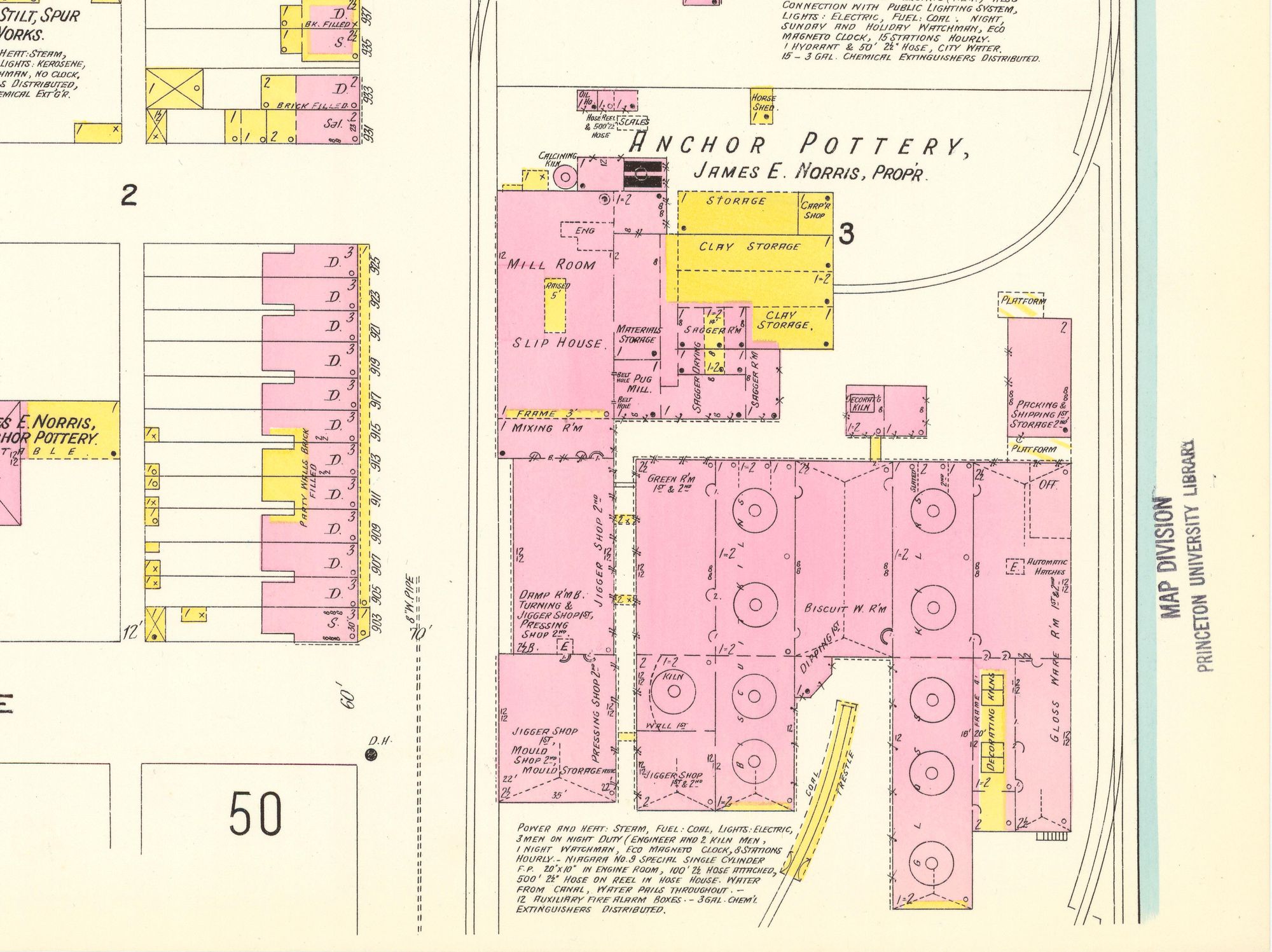Anchor Pottery
In operation 1884-1926
Wares
Cream-colored ware, white granite, semi-porcelains, dinner and toilet ware (Trenton Board of Trade 1900)
Porcelain goods (Industrial Directory 1906)
Electrical porcelain (Industrial Directory 1909)
Dinner and toilet ware (Industrial Directory 1912, 1918, 1927)
Notes
The pottery was operated by James E. Norris. Area of approximately 440′ x 550′ on the Delaware and Raritan Canal between Pennsylvania railroad and Philadelphia & Reading railroad; the factory has spurs from each line. The pottery owned fourteen kilns (four biscuit, five gloss and five decorating) and employed two hundred fifty hands. Products were chiefly high grade cream colored ware, white granite and semi-porcelain dinner and toilet ware, both plain and decorated. Their products were shipped throughout the northeast United States.
— Trenton Board of Trade. 1900. Industrial Trenton and Vicinity. George A. Wolf Publishers, Wilmington, Delaware.
Selected References
Trenton Board of Trade. 1900. Industrial Trenton and Vicinity. George A. Wolf Publishers, Wilmington, Delaware.
Harney, W.J. 1929. “Trenton’s First Potteries.” Sunday Times Advertiser, July 7, 14, 21 and 28, 1929.
Branin, M. Lelyn. 1988. The Early Makers of Handcrafted Earthenware and Stoneware in Central and Southern New Jersey. Associated University Presses, Inc., Cranbury, New Jersey.
Goldberg, David J. 1998. Preliminary Notes on the Pioneer Potters and Potteries of Trenton, N.J.: The First Thirty Years – 1852 – 1882 (And Beyond). Privately published, Trenton, New Jersey.
Other firms at this site:
Other Names
Anchor Pottery
Block and Lot:
213A/1,2; 217D; 217E
Historic Street Address:
New York Ave corner Mulberry St; E. Trenton above Canal; Delaware & Raritan Canal; Delaware & Raritan Canal above Rose; South Rose; New York Ave near Olden; 930 New York Ave
Municipality:
Millham Township; City of Trenton
Image Gallery
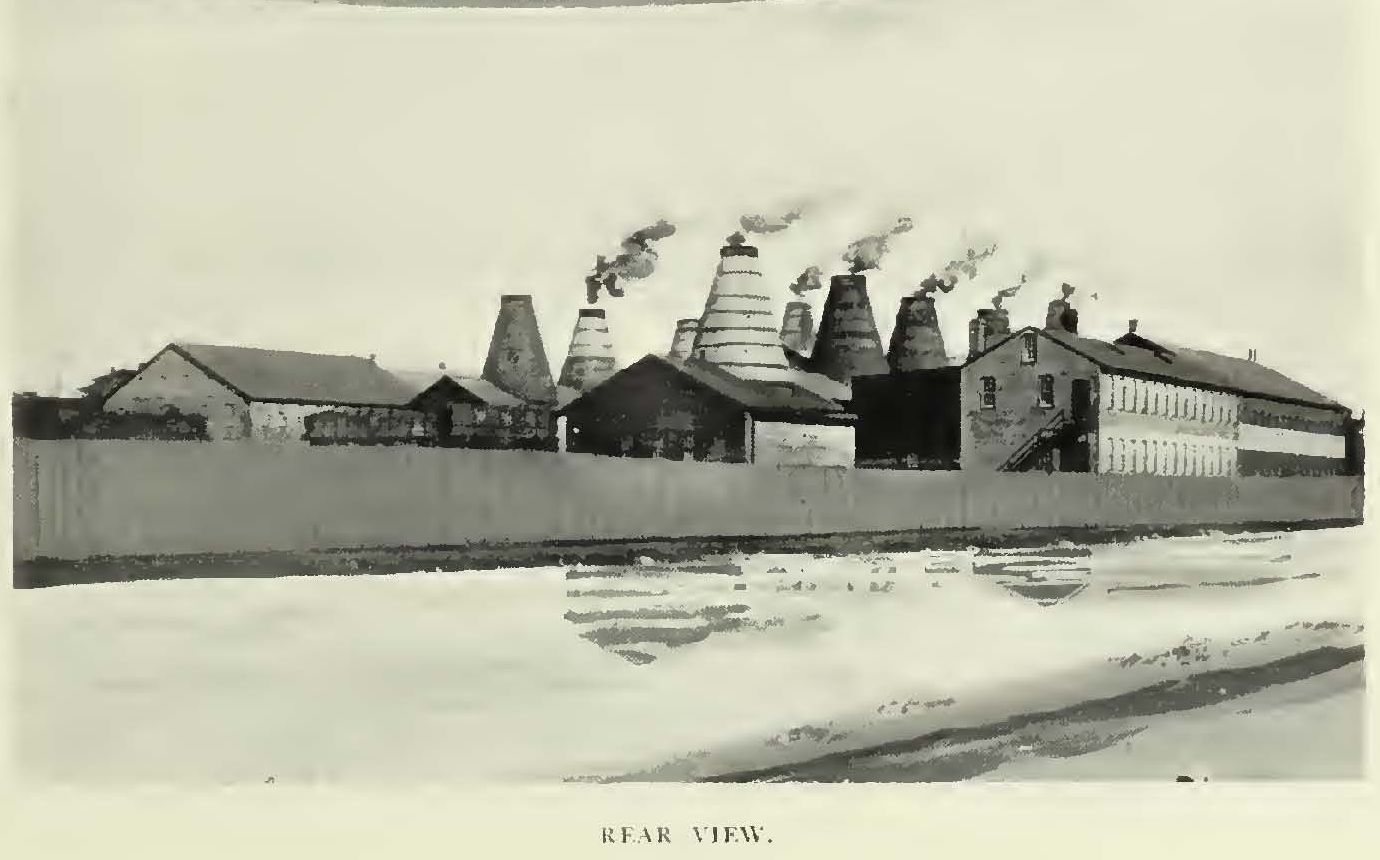
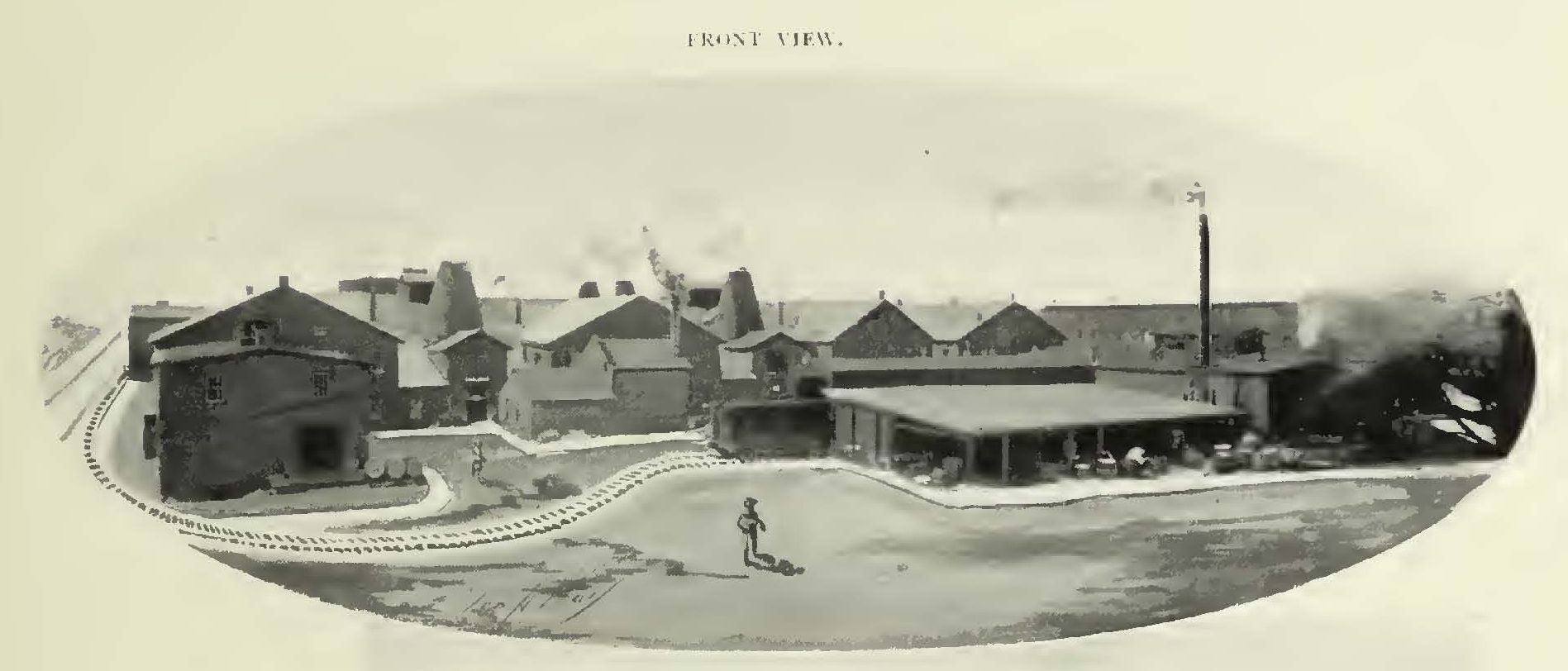
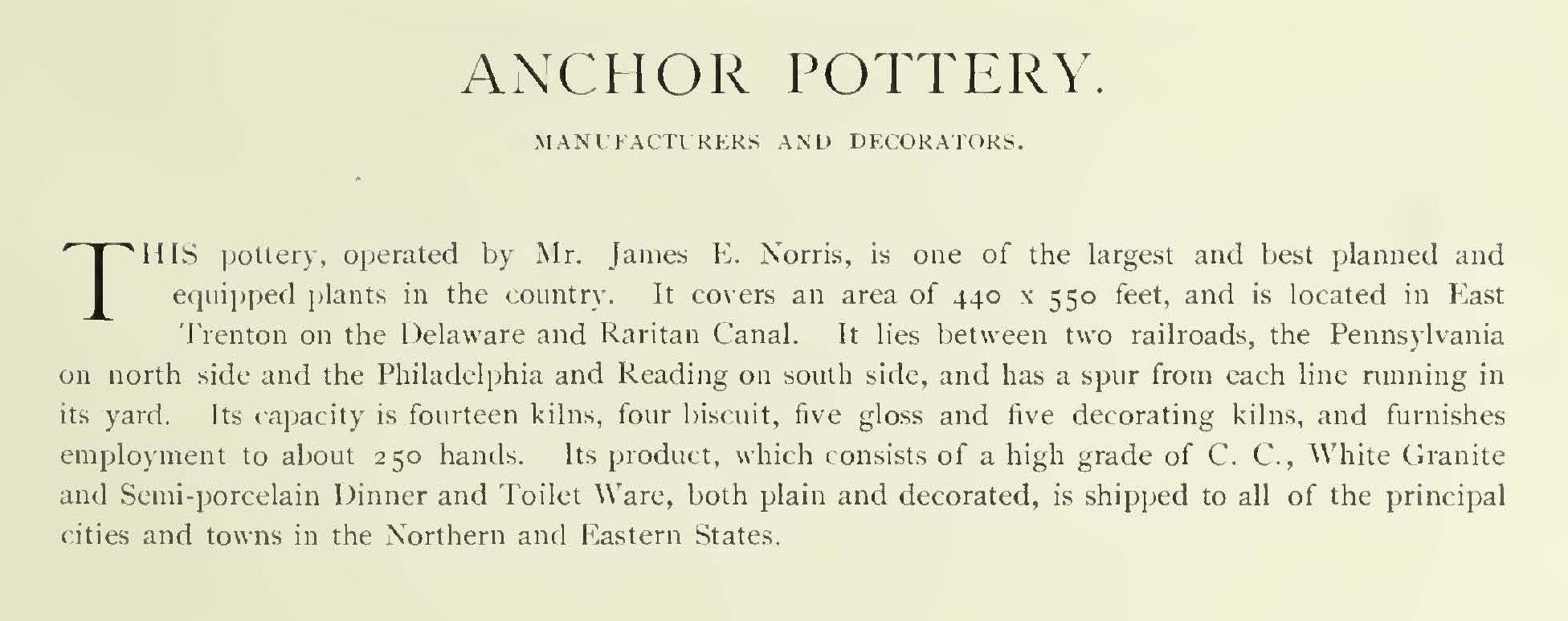
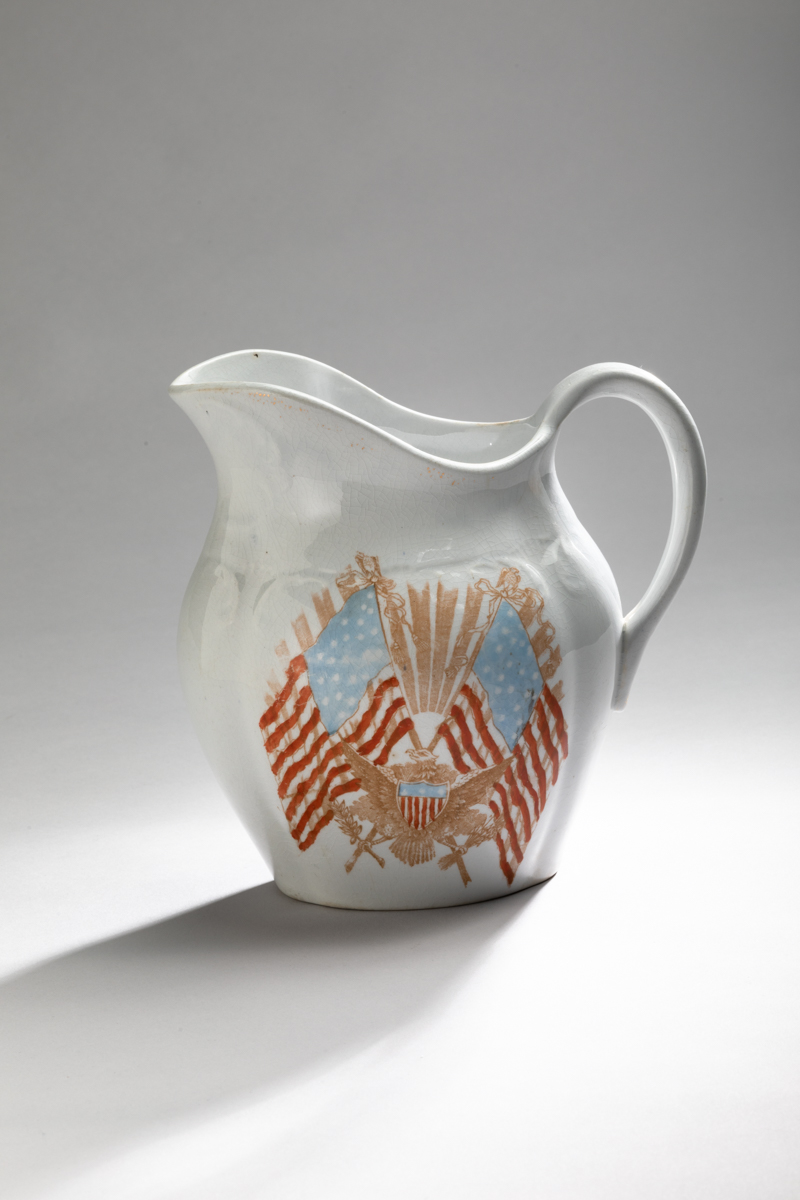
Map Gallery
Map References
Sanborn, D. A. 1874. Insurance Diagrams of Trenton. Corrected to 1886. D.A. Sanborn, New York, New York. (Plate 16: shown as “I. Lacy’s Anchor Pottery”)
Bourquin, F., and C. C. Haven. 1873-1880. Enterprise Land Company plan of building lots and manufacturing sites lying between Brunswick Avenue and Clinton Street, East Trenton, N.J. Enterprise Land Company, Trenton, New Jersey. (Shown as “Anchor Pottery Co.”)
Sanborn‑Perris Map Company. 1890. Insurance Maps of the City of Trenton, Mercer County, New Jersey. Sanborn‑Perris Map Company, New York, New York. (Plate 19: shown as “Anchor”)
Scarlett & Scarlett. 1890. Scarlett & Scarlett’s Fire Insurance Map of Mercer County. Scarlett & Scarlett, Newark, New Jersey. (Plate 63: shown as “Anchor Pottery”)
Lathrop, J. M. 1905. Atlas of the City of Trenton and Borough of Princeton. A.H. Mueller & Company, Philadelphia, Pennsylvania. (Plate 15: shown as “Anchor Pottery”)
Sanborn Map Company. 1908. Insurance Maps of the City of Trenton, Mercer County, New Jersey, Volume 1. Sanborn Map Company, New York, New York. (Vol.1, plate 52: shown as “Anchor Pottery, James E. Norris, proprietor”)
